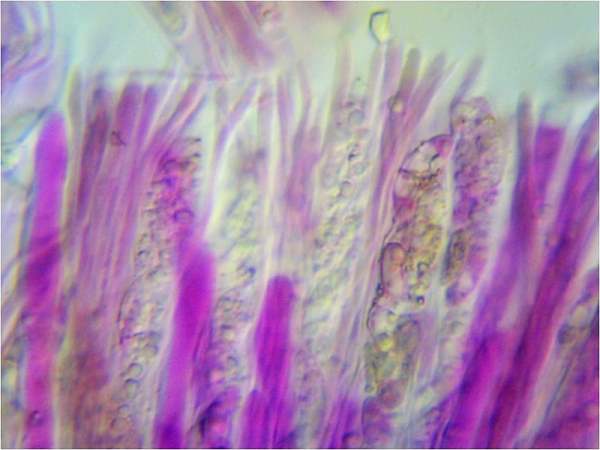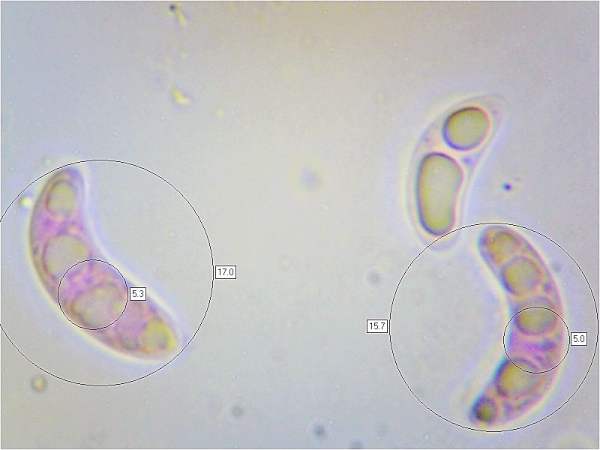Lanzia echinophila (Bull.) Korf - Hairy Nuts Disco
Phylum: Ascomycota - Class: Leotiomycetes - Order: Helotiales - Family: Rutstroemiaceae
Distribution - Taxonomic History - Etymology - Identification - Culinary Notes - Reference Sources
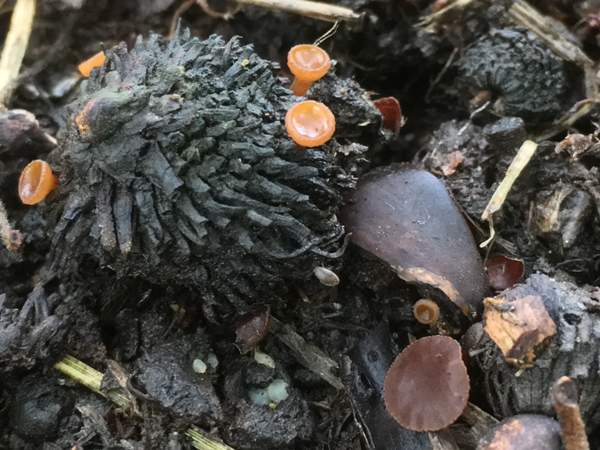
Lanzia echinophila, the Hairy Nuts Disco, is initially subglobose and bright orange. As it grows it becomes cup shaped and eventually flattens out, and its upper (fertile) surface turns reddish brown. This little ascomycete fungus is most often found on rotting cases of Sweet Chestnuts Castanea sativa, but it can also occur on the cupules of various kinds of acorns, most notably of Turkey Oak Quercus cerris.
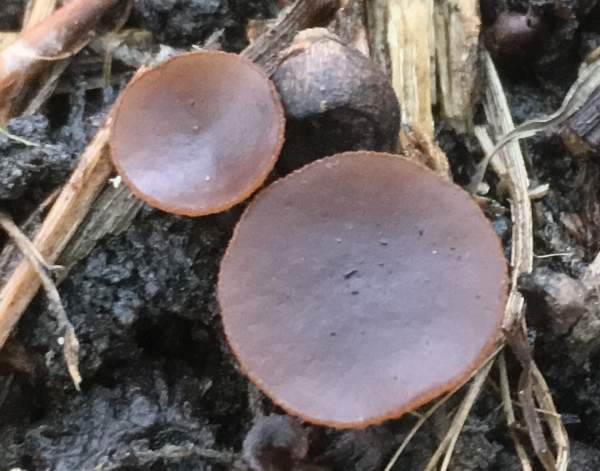
Distribution
An infrequent and mostly southern find in Britain and Ireland, the Hairy Nuts Disco occurs also throughout mainland Europe, from Scandinavia right down to the Mediterranean including Germany, France, Spain, Portugal, Austria Italy and Bulgaria. A very similar ascomycete species was fairly common in parts of North America before a fungal blight killed most of the mature American Chestnut trees Castanea dentata.
Taxonomic history
In 1791 when Jean Baptiste Francois (Pierre) Bulliard described this species, he named it Peziza echinophilus. The currently-accepted scientific name dates from a 1982 publication in Mycotaxon by American mycologist Richard Paul Korf (1925 - 2016).
Synonyms of Lanzia echinophila include Peziza echinophila Bull., Ciboria echinophila (Bull.) Sacc., Phialea echinophila (Bull.) Gillet, Rutstroemia echinophila (Bull.) Hohn., and Sclerotinia echinophila (Bull.) Rehm.
Etymology
The specific epithet echinophila means 'spine-loving' and is a reference to fact that these cup fungi usually occur on the spiny cases of Sweet Chestnuts. The common name also refers to the spiny or hairy outer surfaces of the nut husks upon which this species is found.
Identification guide
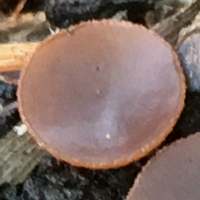 |
Fertile (inner) surfaceThe upper (inside of the cup) surfaces of these cryptic fungi are smooth and vary in colour from pale orange through to mid brown. The cups range fron 2 to 10mm in diameter. The cup is typically 1 to 5mm tall, and is attached to a stipe typically 1 to 2mm in diameter and 1 to 4mm tall. |
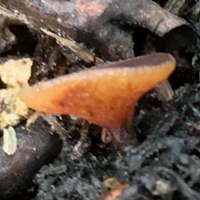 |
Infertile (outer) surface and stemThe outer (infertile) surface of the cup is rough and much lighter in colour than the inner surface; the spores are produced within asci on the shiny inner surface of the cup. |
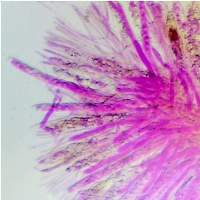 |
AsciCylindrical; typically 120 x 12µm; amyloid; with eight spores per ascus. ParaphysesNarrow, cylindrical. (Paraphyses are structures of sterile tissue between the asci on the hymenial surface.) |
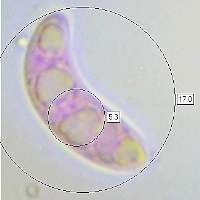 |
SporesAllantoid (sausage shaped), 16-20 x 5-6µm, each spore usually containing four oil drops. Spore printWhite. |
Odour/taste |
Not distinctive. |
Habitat & Ecological role |
Saprobic, mostly on decaying hairy cases of Sweet Chestnuts, but also on rotting acorns, particularly the hairy cases of Turkish Oak fruits. |
Season |
August to November in Britain and Ireland; later in southern parts of mainland Europe. |
Similar species |
Beech Jellydisc Neobulgaria pura produces similar but usually much larger structures on hardwoods, particularly Fagus spp. |
Culinary Notes
This insubstantial cup fungus is of no cullinary value; its edibility is unknown to us.
Reference Sources
Fascinated by Fungi, 2nd Edition, Pat O'Reilly 2016, reprinted by Coch-y-bonddu Books in 2022.
Dennis, R.W.G. (1981). British Ascomycetes; Lubrecht & Cramer; ISBN: 3768205525.
Breitenbach, J. & Kränzlin, F. (1984). Fungi of Switzerland. Volume 1: Ascomycetes. Verlag Mykologia: Luzern, Switzerland.
Medardi, G. (2006). Ascomiceti d'Italia. Centro Studi Micologici: Trento.
Dictionary of the Fungi; Paul M. Kirk, Paul F. Cannon, David W. Minter and J. A. Stalpers; CABI, 2008
BMS List of English Names for Fungi
Taxonomic history and synonym information on these pages is drawn from many sources but in particular from the British Mycological Society's GB Checklist of Fungi.
Acknowledgements
This page includes pictures kindly cointributed by Simon Harding.
Fascinated by Fungi. Back by popular demand, Pat O'Reilly's best-selling 450-page hardback book is available now. The latest second edition was republished with a sparkling new cover design in September 2022 by Coch-y-Bonddu Books. Full details and copies are available from the publisher's online bookshop...
